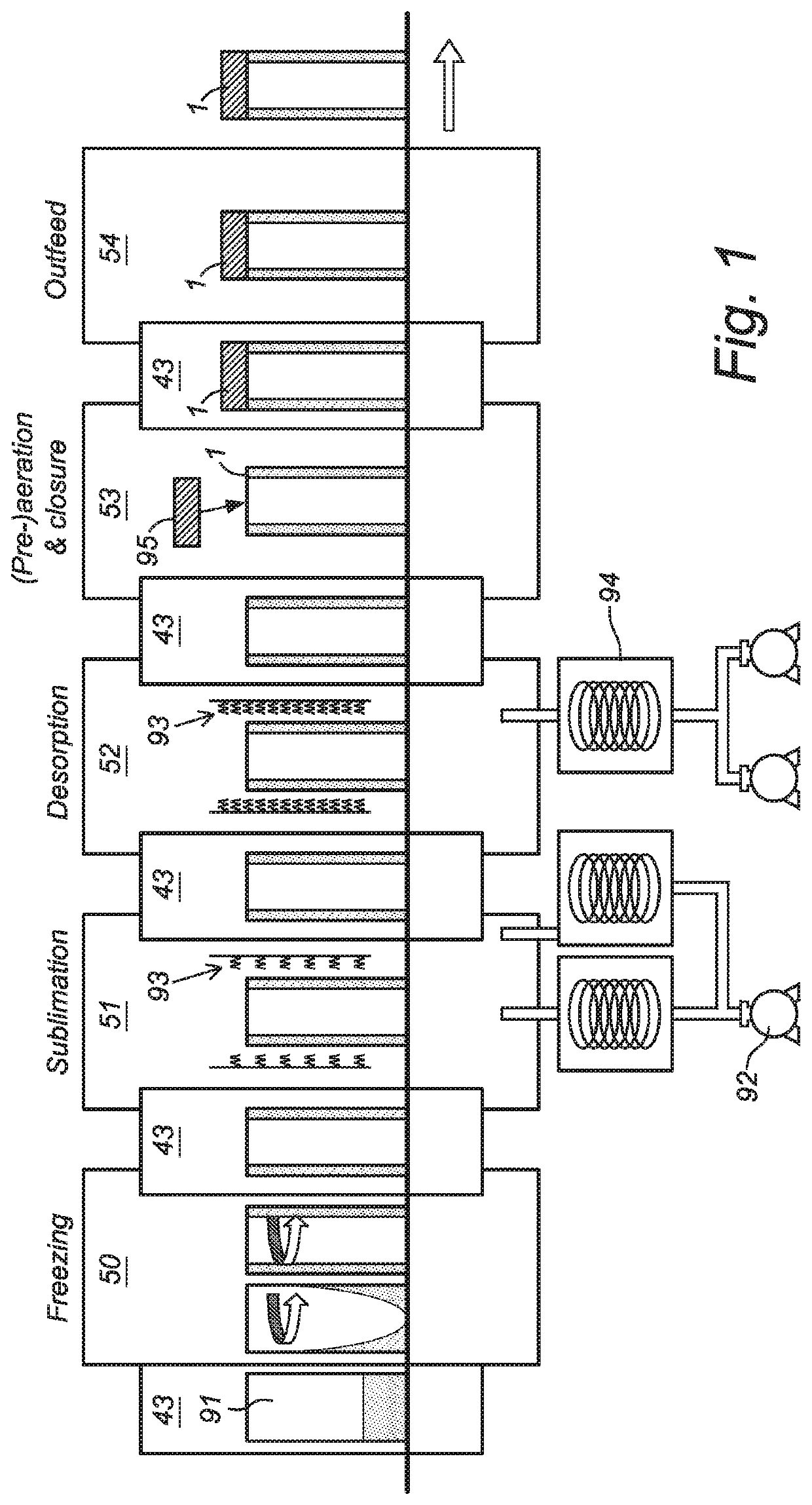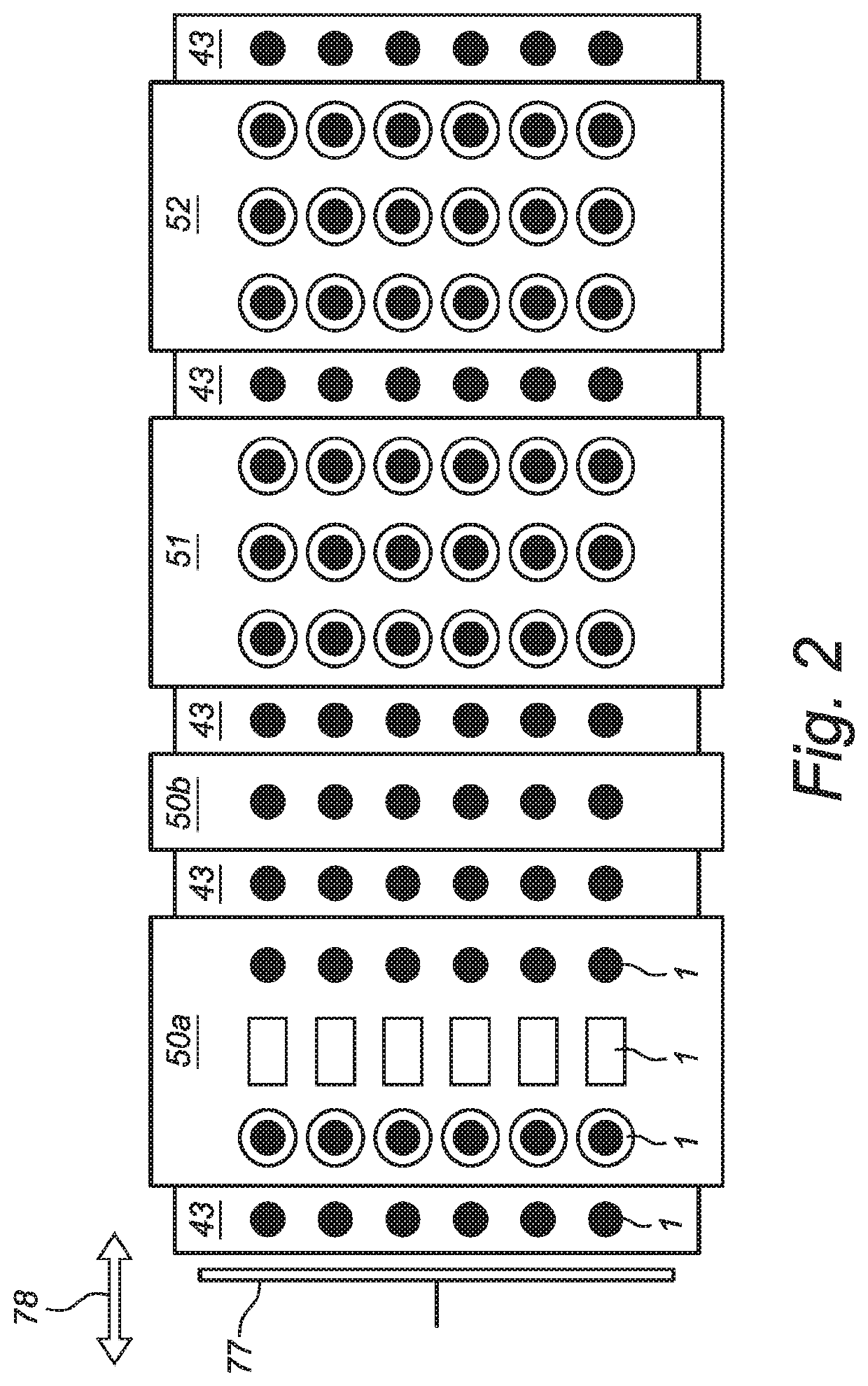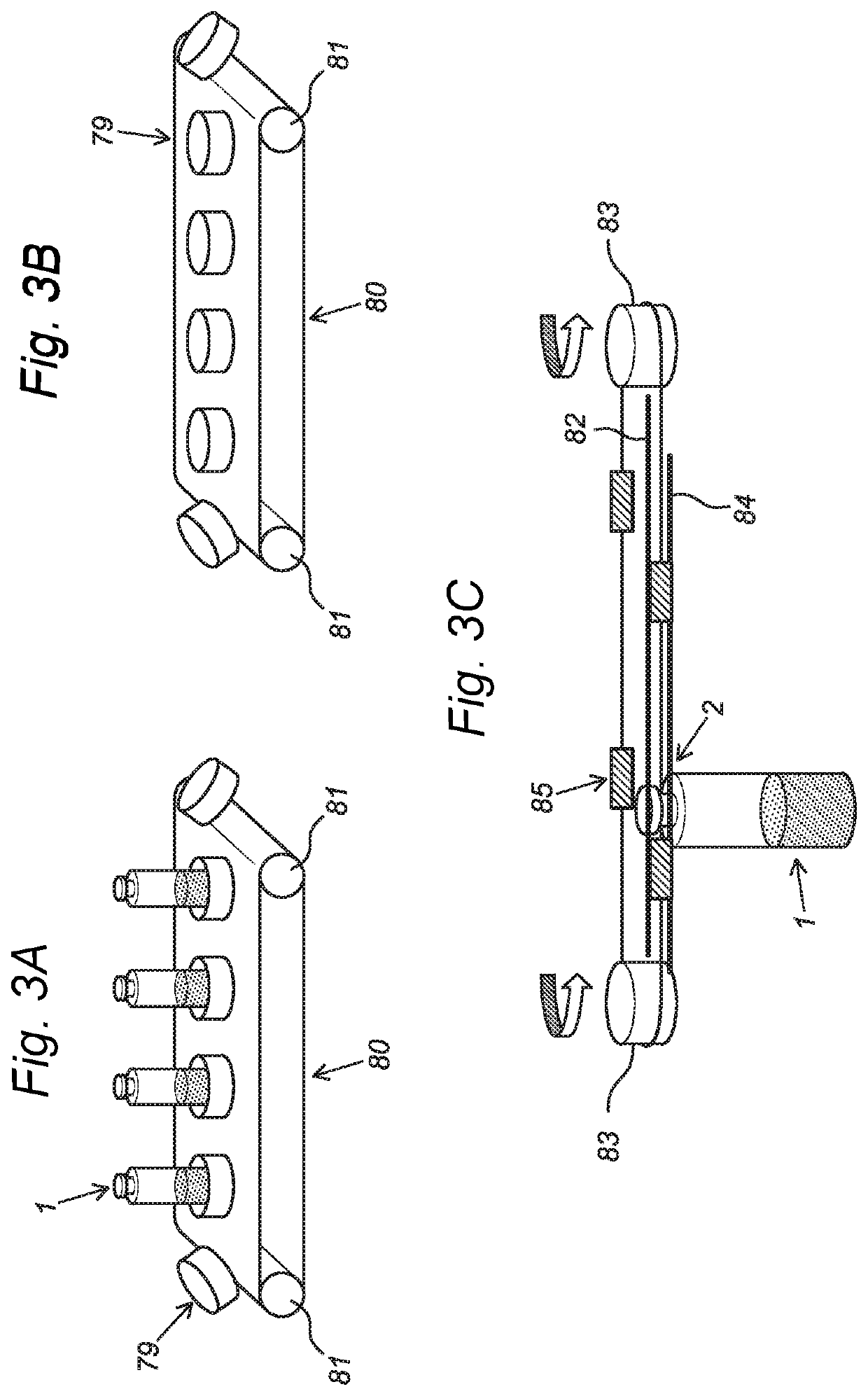Method and system for freeze-drying injectable compositions, in particular pharmaceutical compositions
a technology of injectable compositions and freeze-drying, which is applied in the direction of drying solid materials without heat, drying solid materials, lighting and heating apparatus, etc., can solve the problems of poor stability in aqueous solutions, known methods also suffer from serious drawbacks, and the process is relatively slow
- Summary
- Abstract
- Description
- Claims
- Application Information
AI Technical Summary
Benefits of technology
Problems solved by technology
Method used
Image
Examples
Embodiment Construction
[0058]The full system is schematically described with reference to FIG. 1. A continuous row of vials 1 is moving through a connected line of process modules. The system comprises a Freezing Module 50, a Sublimation Module 51, a Desorption Module 52, a Pre-aeration & Closure Module 53 and an Outfeed Module 54. The different modules are interconnected by locks 43 to separate the different conditions. In the freezing module a dispersion of an injectable composition in an aqueous dispersion medium in a ready-to-use vial 91, in particular single-dose vial, is cooled and with specific process settings the various phase transitions (crystallization) and glass transitions are achieved in a controlled manner. In the sublimation module 51 the solvent crystals (in most cases ice) are sublimating by applying by means of a vacuum pump 92 a vacuum below the triple point of water and at the same time supplying energy in the form of thermal heat by using a heating element 93 to compensate the laten...
PUM
| Property | Measurement | Unit |
|---|---|---|
| thickness | aaaaa | aaaaa |
| temperatures | aaaaa | aaaaa |
| temperature | aaaaa | aaaaa |
Abstract
Description
Claims
Application Information
 Login to View More
Login to View More - R&D
- Intellectual Property
- Life Sciences
- Materials
- Tech Scout
- Unparalleled Data Quality
- Higher Quality Content
- 60% Fewer Hallucinations
Browse by: Latest US Patents, China's latest patents, Technical Efficacy Thesaurus, Application Domain, Technology Topic, Popular Technical Reports.
© 2025 PatSnap. All rights reserved.Legal|Privacy policy|Modern Slavery Act Transparency Statement|Sitemap|About US| Contact US: help@patsnap.com



